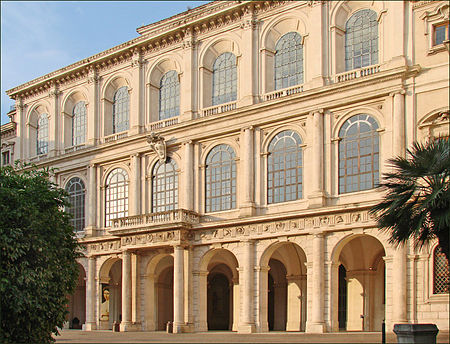Galleria Nazionale d'Arte Antica

The Galleria Nazionale d'Arte Antica or National Gallery of Ancient Art is an art museum in Rome, Italy. It is the principal national collection of older paintings in Rome – mostly from before 1800; it does not hold any antiquities. It has two sites: the Palazzo Barberini and the Palazzo Corsini.The Palazzo Barberini was designed for Pope Urban VIII, a member of the Barberini family, by the sixteenth-century architect Carlo Maderno on the old location of Villa Sforza. Its central salon ceiling was decorated by Pietro da Cortona with the visual panegyric of the Allegory of Divine Providence and Barberini Power.The Palazzo Corsini, formerly known as Palazzo Riario, is a fifteenth-century palace, rebuilt in the eighteenth century by the architect Ferdinando Fuga for Cardinal Neri Maria Corsini.
Excerpt from the Wikipedia article Galleria Nazionale d'Arte Antica (License: CC BY-SA 3.0, Authors, Images).Galleria Nazionale d'Arte Antica
Via Barberini, Rome Municipio Roma I
Geographical coordinates (GPS) Address Website Nearby Places Show on map
Geographical coordinates (GPS)
| Latitude | Longitude |
|---|---|
| N 41.903513888889 ° | E 12.490208333333 ° |
Address
Palazzo Barberini
Via Barberini
00187 Rome, Municipio Roma I
Lazio, Italy
Open on Google Maps










